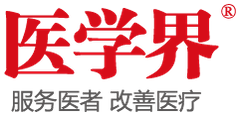232人浏览
0收藏
0次下载
Artificial airway suctioning is a key component of airway management and a core skill for clinicians charged with assuring airway patency. Suctioning of the artificial airway is a common procedure performed worldwide on a daily basis. As such, it is imperative that clinicians are familiar with the most-effective and efficient methods to perform the procedure. We conducted a systematic review to assist in the development of evidence-based recommendations that pertain to the care of patients with artificial airways. From our systematic review, we developed guidelines and recommendations that addressed questions related to the indications, complications, timing, duration, and methods of artificial airway suctioning. By using a modified version of the RAND/UCLA Appropriateness Method, the following recommendations for suctioning were developed for neonatal, pediatric, and adult patients with an artificial airway: (1) breath sounds, visual secretions in the artificial airway, and a sawtooth pattern on the ventilator waveform are indicators for suctioning pediatric and adult patients, and an acute increase in airway resistance may be an indicator for suctioning in neonates; (2) as-needed only, rather than scheduled, suctioning is sufficient for neonatal and pediatric patients; (3) both closed and open suction systems may be used to safely and effectively remove secretions from the artificial airway of adult patients; (4) preoxygenation should be performed before suctioning in pediatric and adult patients; (5) the use of normal saline solution should generally be avoided during suctioning; (6) during open suctioning, sterile technique should be used; (7) suction catheters should occlude < 70% of the endotracheal tube lumen in neonates and < 50% in pediatric and adult patients, and suction pressure should be kept below –120 mm Hg in neonatal and pediatric patients and –200 mm Hg in adult patients; (8) suction should be applied for a maximum of 15 s per suctioning procedure;(9) deep suctioning should only be used when shallow suctioning is ineffective; (10) routine bronchoscopy for secretion removal is not recommended; and (11) devices used to clear endotracheal tubes may be used when airway resistance is increased due to secretion accumulation.








